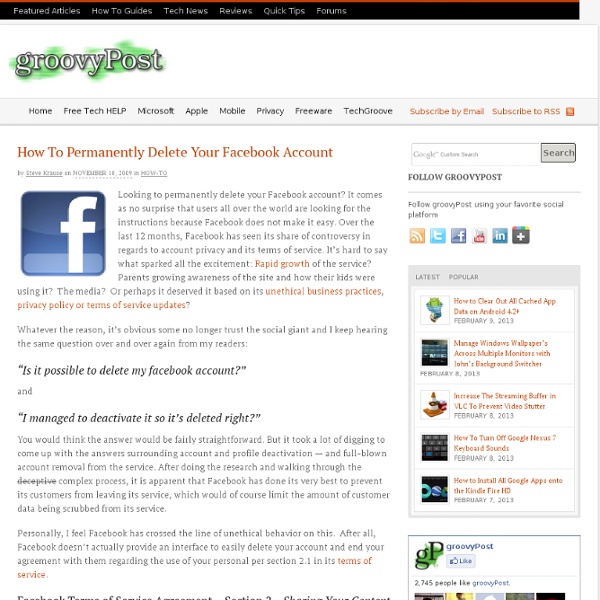Hackers: Heroes of the Computer Revolution - Wikipedia, the free
The book saw an edition with a new afterword (entitled "Afterword: Ten Years After") by the author in 1994.[1] In 2010, a 25th anniversary edition with updated material was published by O'Reilly.[2] Levy's description of hacker ethics and principles[edit] First and foremost to Levy's principles is the concept of the hacker ethic and the popularization of them to popular culture. In Levy's own words, the principles dictate; Access to computers—and anything which might teach you something about the way the world works—should be unlimited and total. The hacker ethic deals with the idea that individuals are performing a duty for the common good, an analogy to a modern day 'Robin Hood'. Preface[edit] Levy decided to write about the subject of hackers because he thought they were fascinating people. For this book, Levy talked to many different hackers, who were active from the 1950s until the 1980s. Who's Who[edit] Part One: True Hackers[edit] 1. 2. 3. 6. 7. Part Two: Hardware Hackers[edit]
FML News
#pdlt : Esprit hacker, es-tu là
Xavier de la Porte, producteur de l’émission Place de la Toile sur France Culture, réalise chaque semaine une intéressante lecture d’un article de l’actualité dans le cadre de son émission. Désormais, vous la retrouverez toutes les semaines aussi sur InternetActu.net. Le mensuel américain Wired vient de livrer un article qui fait la couverture du numéro de mai titré : “Le pouvoir geek : comment la culture hacker a conquis le monde”. Le dossier consiste en un long papier de Steven Levy dont l’angle est alléchant. L’idéal hacker Je fais une parenthèse terminologique. Levy rappelle à quel point ces préceptes ont inspiré des générations de programmeurs, d’intellectuels et d’entrepreneurs et à quel point aussi toute personne qui utilise un ordinateur en profite, “l’internet lui-même existe grâce aux idéaux hackers”, résume-t-il. Comment le code façonne l’humanité Parmi les Titans, il y a évidemment Bill Gates. Autre figure intéressante, et moins connue, Andy Hertzfeld. Xavier de la Porte
Tableau de bord
Les « bidouilleurs » de la société de l’information, par Jean-Ma
En 2005, deux électroniciens découvrirent, stupéfaits, que les données confidentielles contenues dans la carte Vitale n’étaient pas protégées : on pouvait les lire, mais aussi les modifier. Pour d’obscures raisons, le mécanisme de sécurité n’avait pas été activé. L’affaire aurait pu faire scandale ; elle ne suscita que quelques articles de presse, et fut rapidement oubliée après que les responsables de la carte Vitale, tout en reconnaissant le problème, eurent déclaré qu’il serait corrigé. Quelques mois plus tard, l’un des deux électroniciens remonta au créneau en faisant remarquer que rien n’avait été fait. La sensibilité aux questions de vie privée, d’informatique et de libertés est autrement plus vive dans d’autres pays. Cette décision de justice tout comme la médiatisation internationale de cette (...) Taille de l’article complet : 2 001 mots. Vous êtes abonné(e) ? Connectez-vous pour accéder en ligne aux articles du journal. Vous n'êtes pas abonné(e) ? Accès sans abonnement
Hackers, pirates, cyberpunks : la résistance du web, Vu sur le w
L'avènement des nouvelles technologies dans les années 1970, la démocratisation du micro-ordinateur, l'accès à une information toujours plus large, ont permis l'émergence d'une autre culture de masse. Cet essor a engendré l'accès à de nouveaux savoirs, à une pluralité d'informations. Cependant la quasi-totalité de la toile étant gérée par quelques multinationales surpuissantes, il existe une frange qui se détache de cette information, la considérant comme tronquée. Cette faction revendique ainsi un véritable monde numérique, sans aucune frontière. Fonctionnant avec ses propres codes, ces personnes ont décidé d'œuvrer en faveur de la vérité, de l'information, usant parfois de moyens controversés. Hackers, cyberpunks, pirates, la résistance du web est arrivée il y a maintenant une vingtaine d'années et n'a cessé de s'imposer. Qu'est ce qu'un hacker? Voici la définition qu'on peut trouver dans le Larousse édition 2009. Le Hacker Space Festival 2009 Aux origines du hacker : le phreaker
How To Become A Hacker
Copyright © 2001 Eric S. Raymond As editor of the Jargon File and author of a few other well-known documents of similar nature, I often get email requests from enthusiastic network newbies asking (in effect) "how can I learn to be a wizardly hacker?". If you are reading a snapshot of this document offline, the current version lives at Note: there is a list of Frequently Asked Questions at the end of this document. Numerous translations of this document are available: ArabicBelorussianChinese (Simplified), Czech, Danish, Dutch, Estonian, German, GreekItalianHebrew, Norwegian, PersianPortuguese (Brazilian), RomanianSpanish, Turkish, and Swedish. The five-dots-in-nine-squares diagram that decorates this document is called a glider. If you find this document valuable, please leave me a tip on Gittip. The hacker mind-set is not confined to this software-hacker culture. The basic difference is this: hackers build things, crackers break them. 1. 2.
What is a Hacker
Copyright © 2001 Eric S. Raymond As editor of the Jargon File and author of a few other well-known documents of similar nature, I often get email requests from enthusiastic network newbies asking (in effect) "how can I learn to be a wizardly hacker?". Back in 1996 I noticed that there didn't seem to be any other FAQs or web documents that addressed this vital question, so I started this one. If you are reading a snapshot of this document offline, the current version lives at Note: there is a list of Frequently Asked Questions at the end of this document. Numerous translations of this document are available: ArabicBelorussianChinese (Simplified), Czech, Danish, Dutch, Estonian, German, GreekItalianHebrew, Norwegian, PersianPortuguese (Brazilian), RomanianSpanish, Turkish, and Swedish. The five-dots-in-nine-squares diagram that decorates this document is called a glider. If you find this document valuable, please leave me a tip on Gittip. 1.



